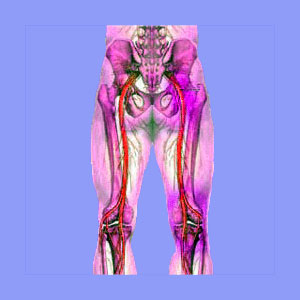
Stubborn sciatica is the usual rule of thumb when it comes to the characteristics of this epidemic chronic pain syndrome. Sciatica usually defies treatment, giving it a stubborn reputation among patients, as well as care providers. In fact, sciatica often endures for years, decades or even for life once it begins.
What makes sciatica so difficult to cure or even to treat effectively? Why does the condition scoff at most treatment attempts and even rarely permanently responds to surgery? Why do so many life circumstances seem to aggravate sciatica, often illogically?
This patent guide takes a break from our usual objective fact-based approach to providing expert patient advice. Instead, in this dialog, we will look at the human experience of suffering with sciatica and the frustration patients must endure when they can not find relief, regardless of what type of therapy they try.
What Causes Stubborn Sciatica?
Sciatica is not inherently any more difficult to treat or cure than any other type of pain. It is, however, often misdiagnosed, which is where all the trouble begins for the average patient.
Let’s suppose that the usual conditions implicated for causing sciatica were always correctly identified. In most cases, the pain would be blamed on general lumbar spinal stenosis or a herniated disc compressing one or more nerve roots between L4 and S3. The most commonly affected nerves would certainly be L5 or S1. These diagnoses comprise the vast majority of structural explanations for any type of sciatica-type pain and are definitely the most commonly pronounced diagnoses for true spinally-motivated sciatica. However, medical science has many effectual treatments for herniated discs, as well as for spinal stenosis. Why then does sciatica endure, despite treatment, despite drug therapies and despite the eventual application of surgery in so many patients?
It is not the stubbornness of sciatica that allows it to persist. Instead, one must assume that it is a flaw in the diagnostic theory, since the original suspected cause has now been resolved, yet the pain remains. Let’s look deeper into this enigmatic mystery of treatment-resistant sciatica pain.
Stubborn or Misdiagnosed Sciatica?
If the suspected cause of sciatica has been cured by successful treatment, such as nonsurgical spinal decompression or surgery, then why would the pain continue after the structural issue has been resolved? Obviously it should not, if the medical model of sciatica used in the diagnosis of hundreds of millions of patients was correct.
Misdiagnosis is a terrible occurrence, but is incredibly and frighteningly commonplace in the back and neck pain sector of healthcare. So many patients are said to suffer because of completely normal and universal aspects of spinal aging that never demonstrate any scientific proof of inherent pathology. These sources include osteoarthritis, bulging discs, scoliosis, hyperlordosis, spondylolisthesis and other common lumbar abnormalities.
If the theory of these conditions being the source of sciatica were right, then pain would end when the “problem was fixed”. Since most sciatica pain does not respond to any form of modern traditional, complementary or even alternative treatment, one must begin to wonder if the entire process by which sciatica is diagnosed has any validity at all.
As back pain researchers, educators, healthcare practitioners and patient advocates, we have witnessed the atrocities perpetrated on the hapless public by a medical community that seeks to propagate myths of sciatica causation for the sake of financial gain. We have spoken out against this practice for over a decade, but unfortunately, the troublesome issue remains, since money is far too powerful of an enticement and can even short-circuit logic in the most brilliant minds of the medical sector.
Stubborn Sciatica Summary
If sciatica is mostly misdiagnosed, then what really is the true source of pain in most patients? This is the natural progression of thought. Well, there are many possible answers that we discuss in great detail throughout this website and within the other sites of the renowned Cure Back Pain Network of websites:
Many cases of seeming sciatica pain are actually pseudo-sciatica. The causes of this problem range greatly and might include such diversity of explanations as diabetes, cervical spinal stenosis, piriformis syndrome, sacroiliac joint dysfunction and localized sciatic nerve concerns. Many of these possible origins are not considered during the diagnostic process, especially when the evaluation is handled by a traditionally-trained physician.
Sciatica can be caused by several diseases and systemic concerns. This is why a full physical exam with bloodwork should always be part of any diagnostic process, even if performed by a busy specialist with time constraints.
Mindbody variants of sciatica are incredibly common. Many sciatica pain syndromes are completely non-structurally motivated and will therefore never respond to any type of physical treatment, except by placebo effect, which will virtually always be temporary. This goes a long way in explaining why so few treatments demonstrate effectiveness for sciatica, despite acting directly on the supposed caused of pain. For mindbody enacted symptoms, the only way to treat the condition logically is with a psychoemotional approach like knowledge therapy.





